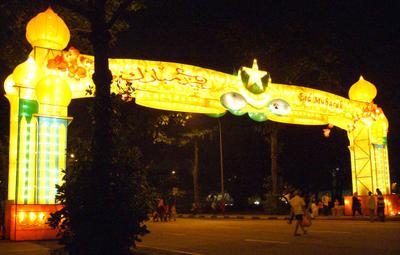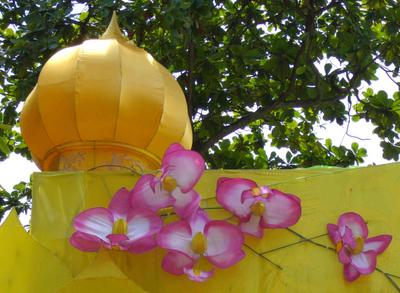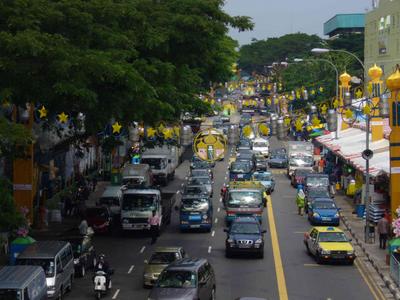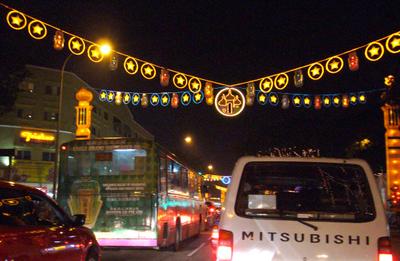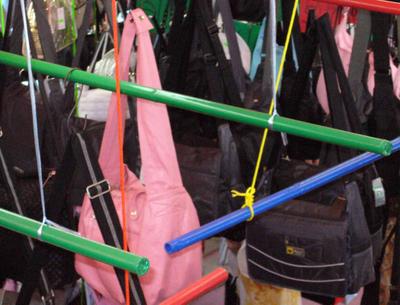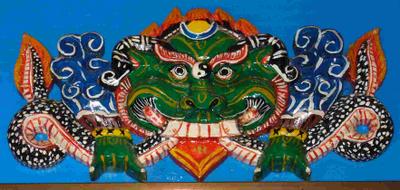
These are two more photos from this weekend that I wanted to add. Above is a picture of the statue of the Buddha that sits atop the former Tai Pei Buddhist Center at the intersection of Lavender Street and Kallang Road. Of course, this is a very prominent landmark here in S'pore, and I enjoy looking at it whenever I go through that intersection. The photo itself is not the best quality, even after all the work I put into getting it up to this level. But considering the numerous factors in trying to take a decent shot of the Buddha that night, I don't think this is that bad a photo.

Lance Armstrong in Singapore? I don't think so. :) While I was up on the pedestrian bridge over Geylang Road, Milady urged me to take this photo of the bicyclist riding west.
I myself love bicycling, and used to do some serious riding to and from university and work when I was younger (we're talking 1500-odd miles per summer when I was working on my Bachelor's degree, and 15-mile rides each way to work when I was getting my Master's). However, I don't really like the idea of riding a bike here in S'pore. The law says you're not supposed to ride on the sidewalks (although many people do), and the streets are too crazy with drivers here for me to trust them. (I didn't trust drivers when I lived in Phoenix, where I was hit twice on the wide streets there; why would I trust them here in the narrow, congested streets?) Neah, I'll take the MRT instead.
